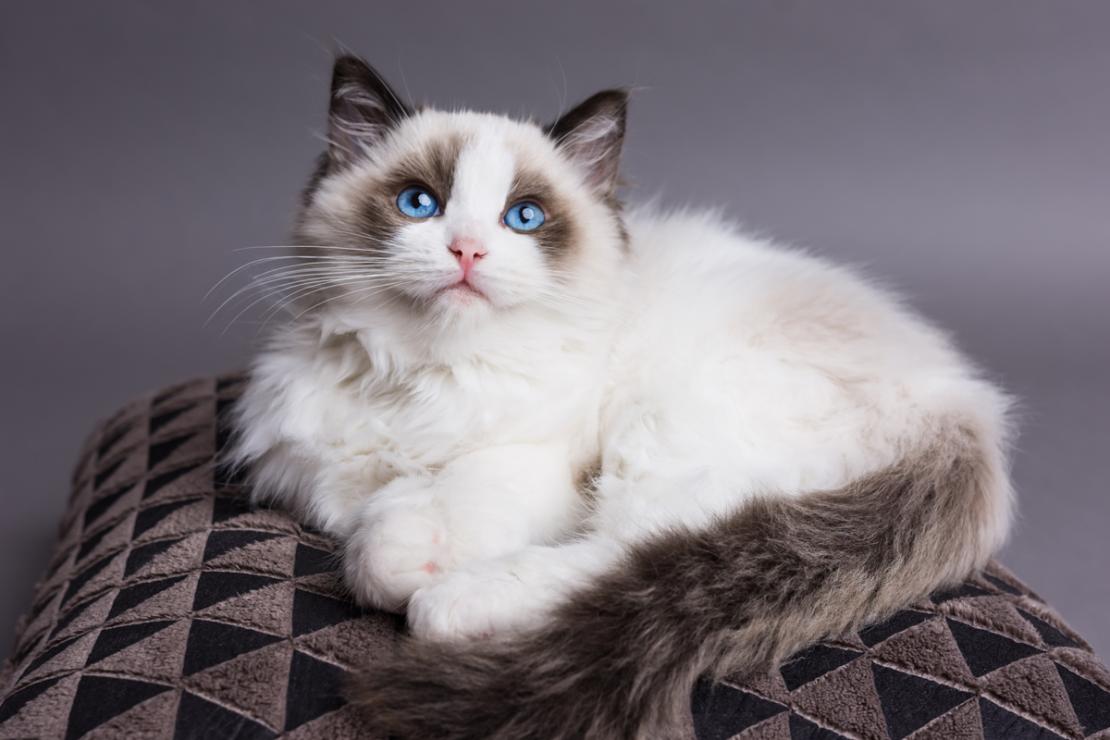Variety Overview
English Name: Ragdoll Cat
Other Name: Rag Doll Cat
Size: Large
Origin: United States
Height: Approximately 50 cm (19.7 inches)
Lifespan: 10-15 years
Ragdoll cats, also known as “Ragdolls,” are a hybrid breed of pet cats that rank among the largest and heaviest in existence.
One of the most notable features of Ragdoll cats is their unique appearance paired with a gentle temperament. Their strikingly beautiful and elegant look combined with dog-like behavior has earned them nicknames like “fairy cats” and “puppy cats.”
Ragdoll cats are generally calm and quiet, friendly towards people. They exhibit gentleness, sophistication, and amiability, making them perfect indoor companions.
It is widely recognized that they can adapt easily to almost any environment. They get along well with children, adults, other cats, and even dogs. Additionally, they are easy to train, do not misbehave excessively, and are not overly demanding.
However, Ragdoll cats are not impervious to pain. If you accidentally step on their tail, they will yelp and reprimand you just like any other cat would.
Development Origin

The Ragdoll cat originated in the United States from white long-haired cats and began to be bred in 1960. It gained recognition in the U.S. by 1965.
The precise origin of the Ragdoll cat dates back to the 1960s when a woman named Ann Baker from California started breeding them. Her first breeding cat was named Josephine (referred to as “Jo”), a pure white mixed-breed long-haired cat.
Initially a stray that roamed around Ann’s house, Jo once got hit by a car but was rescued by Ann’s neighbor who took her in and cared for her until she recovered. During this recovery period indoors, despite being originally wild, Jo showed an unusually gentle temperament around people. When Jo later gave birth again, Ann noticed that these new kittens were much calmer compared to Jo’s previous litters which had more feral traits before her accident. Intrigued by their unique temperament, Ann decided to breed this line further.
Ann then took Jo home and also captured two of her previous kittens born from different fathers outside. She paired them with a male named Warbucks who had distinctive white markings on his nose and tail tip. This pairing produced kittens with Siamese-like point coloration. Eventually, Ann registered these cats as “Ragdolls” and publicized them through various media channels which garnered attention within the feline community.
Ann Baker passed away in 1997 but left behind a legacy with the Ragdoll breed which continued to grow in popularity.
The Cat Fanciers’ Association started registering these cats in 1993 and granted them full recognition by 2000. Today, most major feline registries including the American Cat Fanciers Association and The International Cat Association recognize the Ragdoll breed.
Ideal Audience
Ragdoll cats are known for their exceptional gentleness and are ideal for indoor living. They excel at endearing themselves to their owners, often staying close by their side. While they appreciate a calm environment, they also enjoy playing with toys and being involved in everyday household activities. These cats are perfect companions for families with children, single individuals, and seniors alike.

Feeding Guidelines
Hygiene: Cats have a lot of fur, which makes them prone to carrying germs and fleas. To ensure both your cat’s and your own health, regular baths and grooming sessions are essential.
Diet: Every cat has unique dietary preferences. Rather than picking any commercial cat food out of convenience, owners should choose food carefully based on factors such as breed, growth stage, and overall health. Additionally, special feeding utensils should be provided for your feline friend.
Health: Just like humans, cats can fall ill. It’s crucial to take your cat to a specialized animal hospital if it gets sick. Regular health check-ups and vaccinations are also necessary to keep your cat in good shape so it can stay active and playful.
Safety: The saying “Curiosity killed the cat” holds true; cats are inherently curious creatures that love exploring enclosed spaces. To prevent potential dangers, make sure all doors, windows, and lids are securely closed.
Habitat: Cats enjoy napping more than anything else. Providing a cozy sleeping mat is essential for their comfort. These mats can harbor bacteria over time, so regular cleaning and disinfection are important.
Litter Box: Many pet owners struggle with their pets’ bathroom habits. Fortunately, cats are naturally clean animals; if provided with a litter box, they will use it reliably for their needs.
Cats dislike being forced into doing things and may become irritable if pressured. Regularly trimming their nails is important to avoid scratches during playtime.
